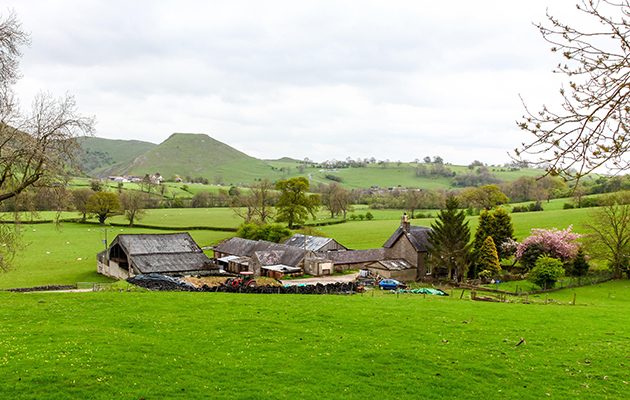A post-Brexit world calls for simple and sophisticated environmental solutions for subsidies. With CAP no longer a binding force, Tim Field explains that now is the time to set the agenda
With Brexit seeing Common Agricultural Policy set sail from our shores, we have the opportunity of a lifetime, says Time Field. Now is the time to set the agenda for post-Brexit agricultural policy.
For more on farming, Tim Field marks a key moment in the farming calendar in spring turn out: put out to grass.
POST-BREXIT AGRICULTURAL POLICY
After 45 years of turgid bureaucracy, Europe’s Common Agricultural Policy (CAP) prepares to set sail from our shores, leaving behind a blank canvas and opportunity to redefine British farming. CAP began with wine lakes and butter mountains, put production in check with set-aside, spruced up the margins and boundaries and made a recent attempt at “greening” across farms. Yet prevailing policy trends for input-intensive farming have seldom looked at efficiency, have only ever achieved stuttering farm profits and made little impact on key environmental indicators, such as water quality and farm biodiversity.
The Government’s Command Paper, Health and Harmony: the future for food, farming and the environment in a Green Brexit, sets the scene as we conceive a new generation of agricultural policy. So how is Defra proposing to implement this and will we be any better for it? The Command Paper has little detail on the execution; however, it does show the Government’s intentions for some noticeable shifts in public spending.
Existing Basic Payments are calculated on the size of holding. In simplistic terms, you are entitled to this chunk of subsidy if you stay within the law. This mechanism is due to be phased out, primarily because of disproportionate benefit seen by the largest landholders that should be more efficient by virtue of scale (notwithstanding less favourable areas of farmland, which are another kettle of fish). However, all is not lost for the large landowners; the new policy will deliver significant subsidies where there is tangible delivery of public goods, that is, going above and beyond producing food within legislative constraints. Any initiative that motivates larger holdings into more environmentally balanced methods of production can only be a good thing as most receptors – be it water quality, biodiversity, flood management, climate change mitigation or others – require landscapes not small, isolated farms to create change.
A HELPING HAND TO SMALLER HOLDINGS
The smaller holdings, which make up the majority of UK farms (the average UK farm is around 200 acres), could see a helping hand, too. Natural England has been adopting the GWCT’s concept of Farmer Clusters, where environmental objectives are tackled with collaborating neighbouring farms, in recognition that many of our targets (from grey partridge pairs to watercourse quality) don’t acknowledge farm boundaries. This form of collaboration is nothing new to the fieldsports community and is certainly something to rally and seek funding for.
Sharing productive land with public goods, whilst losing Direct Payments, might be perceived as uncompetitive on the global stage; however, the report recognises the value of some public goods to underpin a viable harvest and business income, such as improved soils. The lack of reference to increasing yields is noticeable by its absence; something that will no doubt anger those with the 1980s policy mindset that big is beautiful. Instead, collaboration again features heavily, from agronomy to markets, and addresses efficiency, productivity and competitiveness. This is no doubt based on the success of recent initiatives, such as the Innovative Farmers research programme and concepts such as digital machinery-sharing forum, Farm-r.
REWARDING ENVIRONMENTAL OUTCOMES
The current agri-environment schemes rely on selection of actions from a list, such as sowing a “nectar flower mix”, that prescribe what’s needed, where and when. The crux of the new policy hinges on an Environmental Land Management System and this looks to reward environmental outcomes; with our example, the outcome to be rewarded would be “availability of nectar”. Natural England is trialling a results-based payment approach in four scenarios. This element is refreshing and gives scheme ownership to the farmer and hopefully greater leniency to manage the holding to the best of his or her ability to achieve the desired environmental outcomes. This needs to be a sophisticated design but simple in execution. Rather than prescribing a specific option on which to be judged (for example, “reduced flood risk from tree planting”), I’d like to see how payments can support a combination of management practices in-field and beyond the farm gate, such as tillage, rotations, compaction, take-up in neighbouring farms and other holistic practices that would have exponentially greater impact. Environmental initiatives can benefit in-field and beyond farm boundaries as well as margins and less productive areas.
The 64-page Command Paper throws up many more ideas with enough detail to provoke a consultation response. This is a once-in-a-lifetime opportunity to set our own agenda and many in the fieldsports arena have vested interests and acute understanding on how to get it right. You have until 8 May to have your say.
Follow Tim and Agricology @agricology





